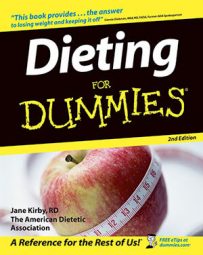Athletes come in many shapes, which impacts their dietary needs. If you lined up a marathon runner, a jockey, a speed skater, a weightlifter, a pole-vaulter, a linebacker, a gymnast, and a sumo wrestler right next to each other, the variation of heights and weights would be vast. The amount of fat on their bodies varies tremendously, too.
The standard reference for healthy weight is the Body Mass Index (BMI). BMI is a ratio of height and weight. A BMI between 19 and 24.9 is considered normal, 25 to 29.9 is overweight, and a BMI of more than 30 is obese. A BMI under 18.9 is too low and may be just as unhealthy as a BMI over 25.
Generally, as BMI increases so does the percentage of a person’s weight that is fat. Increased body fat is associated with increased health risk. For athletes, however, BMI doesn’t provide enough information about your health status or optimal body composition for your sport. For example, a large and muscular athlete, such as a defensive lineman, who is extremely lean but not fat, can have a BMI in the overweight range.The percent of an athlete’s body that’s fat mass (FM for short) versus the percentage that’s fat-free mass (FFM) is a more useful tool than BMI, because body composition directly relates to your athletic performance. Your age, gender, race, diet, and training regimen impacts how much body fat you have.
Before you make any changes in your training schedule or eating habits, get an accurate body composition analysis. Ways to access what your body is made up with include the following:
-
Underwater weighing
-
Skin-fold thickness
-
Bioelectrical impedance

